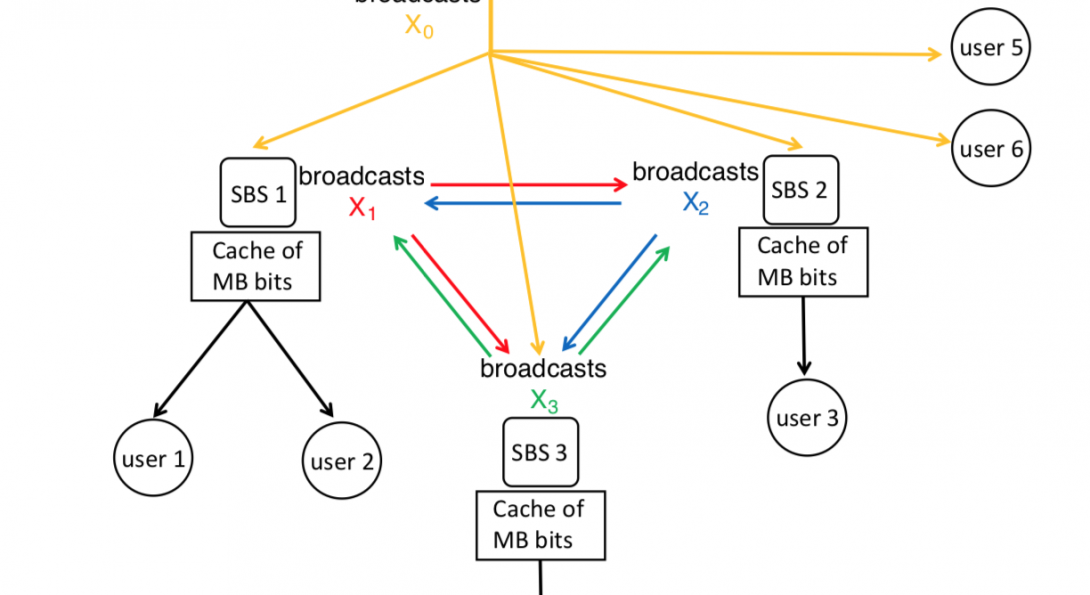Cache-aided Fog Radio Access Networks (Fog-RAN)

1
Sponsors:
Problem Statement and Motivation
- Ccache-aided Fog Radio Access Networks (Fog-RAN) include a Macro-cell Base Station (MBS) co-located with the content server, several cache-equipped Small-cell Base Stations (SBSs), and many users without caches. Some users are served directly by the MBS broadcast downlink, while other users are served by the SBSs. The SBSs can also exchange data via rounds of direct communication via a side channel, referred to as “sidelink”.
- For this novel Fog-RAN model, we investigate the fundamental tradeoff among (a) the amount of cache memory at the SBSs, (b) the load on the downlink (from MBS to directly served users and SBSs), and (c) the aggregate load on the sidelink, under the standard worst-case demand scenario.
Technical Approach
- Our converse bounds borrows ideas from index coding and strengthen cut-set type bounds by using Han’s inequality.
- Our achievable schemes employ coded cache placement and interference-alignment-based delivery.
Key Achievements and Future Goals
- Converse: We derive a converse bound based on Han’s inequality, which is tighter than the one based on a straightforward use of the cut-set bound idea in. In simple terms, our technique allows one to remove the “floor operator” in the cut-set bound. In addition, with the goal of bounding the sidelink load, we develop a novel lower bound of the D2D caching problem.
- Topology-partially-agnostic Caching Scheme: Observing that there are users directly served by the MBS downlink, for which the MBS must broadcast the whole demanded files, we propose an inter-file coded cache placement with the MAN symmetric file subpacketization, such that the SBSs can leverage the broadcasted files by the MBS to its directly served users in order to “decode” the coded content in their cache. This scheme is optimal for some parameter regimes.
- Topology-aware Caching Scheme: We also consider a topology- aware achievable scheme that exploit the detailed knowledge of the SBS occupancy numbers in the placement phase. Our topology-aware cache placement combines the proposed inter- file coded cache placement with a novel asymmetric file subpacketization method that leverages the network structure. In this case, we can prove exactly optimality for some memory size regime.
- Results presented at:
- Kai Wan, Daniela Tuninetti, Mingyue Ji, and Giuseppe Caire, “Novel Cache-aided Fog- RAN Architecture,” Proceedings of the 2019 IEEE International Symposium on Information Theory (ISIT 2019).
- Kai Wan, Daniela Tuninetti, Mingyue Ji, and Giuseppe Caire, “On the Fundamental Limits of Fog-RAN Cache-aided Networks with Downlink and Sidelink Communications.” Preprint available at arXiv:1811.05498. Submitted to IEEE Transactions on Information Theory in May 2019; T-IT-19-0352.

